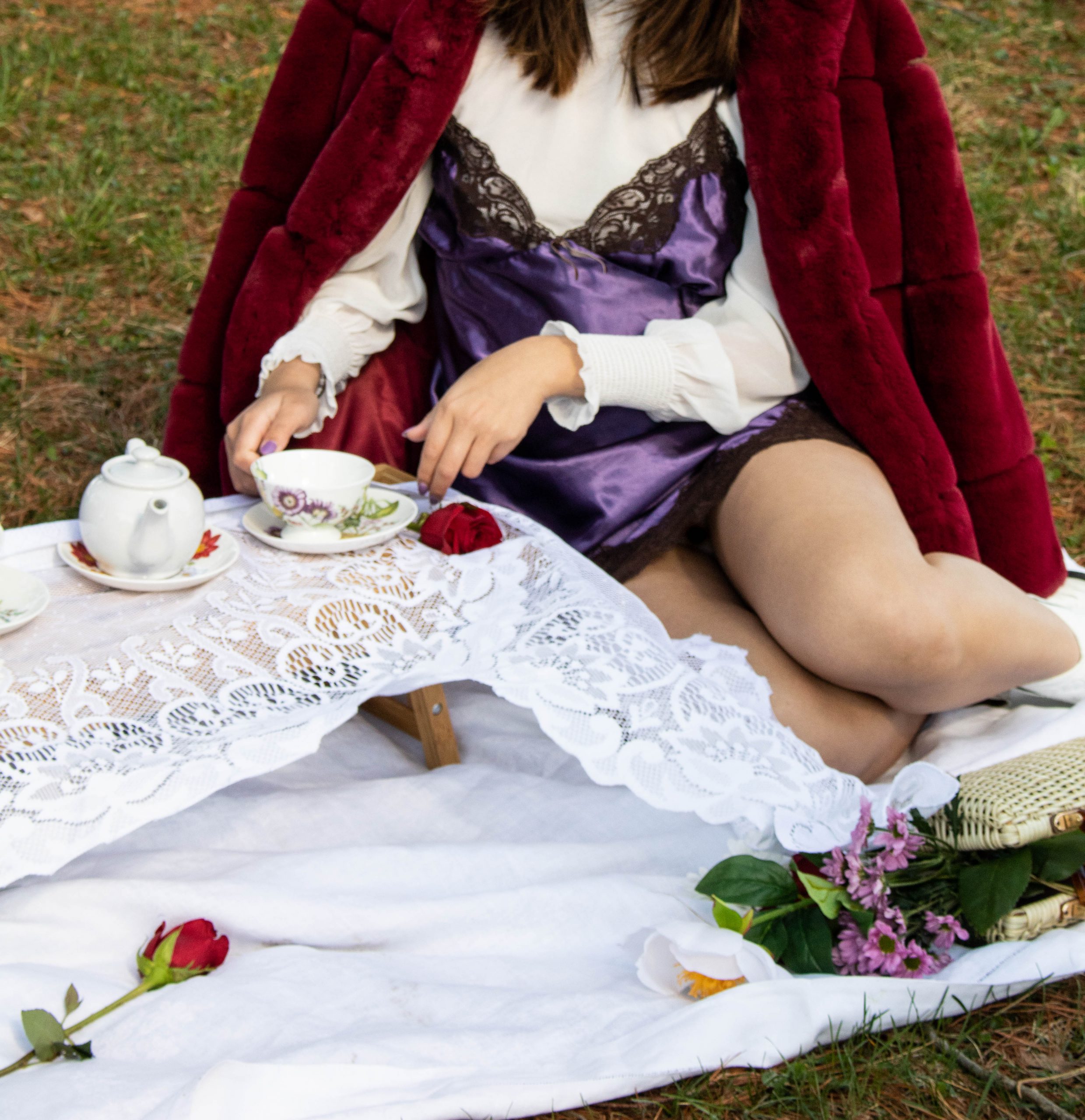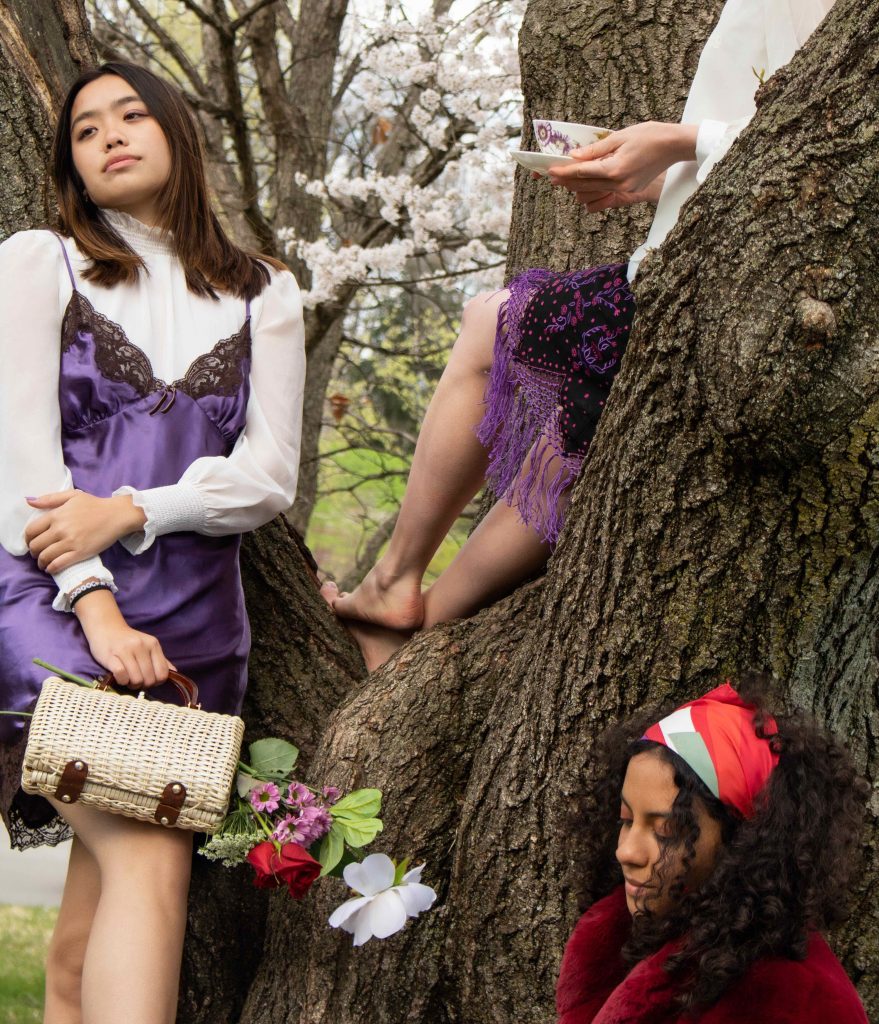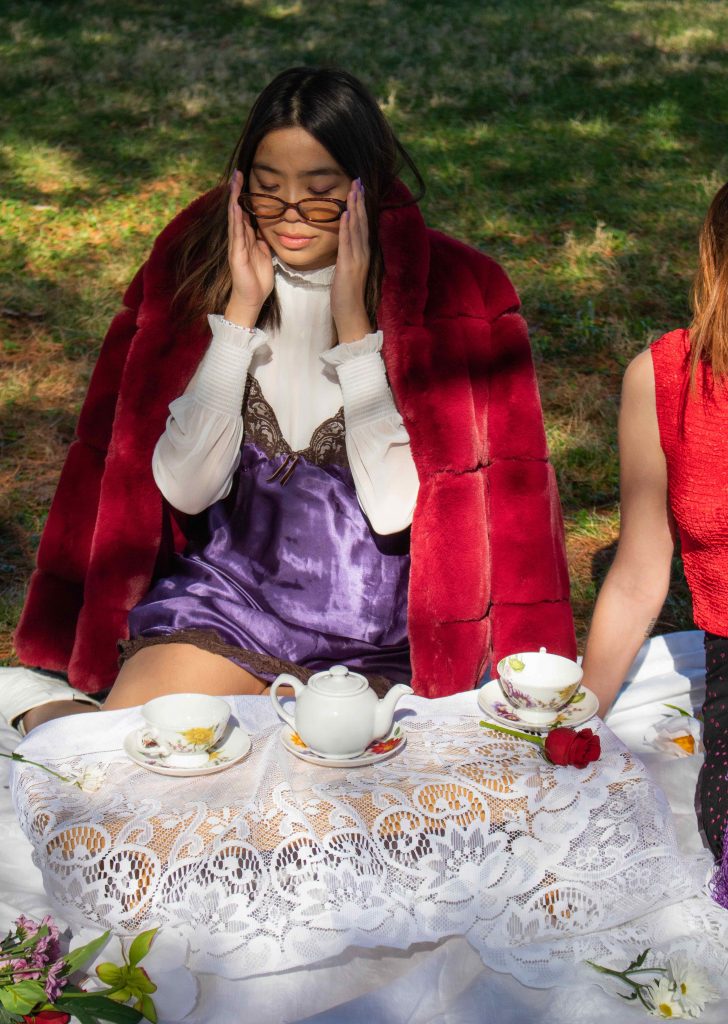Nonbinary writer and activist Alok Vaid-Menon writes in their book Beyond the Gender Binary, “The days I feel most beautiful are the days that I am most afraid.”
I am in the Kappa Sigma basement in sophomore year without the girls of my now-defunct sorority to keep me feeling safe. I am in a three-story house owned and operated exclusively by men. I am wearing a cropped shirt and laughably ripped pants (pants that made Chancellor Wrighton’s wife point and laugh when she saw them on Mardi Gras). However, I am one of around six non-frat-men in attendance, so it’s more like the opening of a cautionary tale told to incoming freshmen. I am in the basement, covered in paint and sweat, and I am talking to a boy who had always been nice to me when other men weren’t. He was on my freshman floor two doors down, always said hi, and we were by all intents and purposes acquaintances. I am in the basement alone while Bohemian Rhapsody plays loudly, making it next to impossible to make small talk without leaning in closer, closer, closer.

I am in the basement when this boy, one of the few generally non-threatening straight men in my mental list of straight men who are fine, not great, but fine, leans in to ask me a series of questions. This boy will hereby be referred to as H.
I am in the basement when H earnestly asks, “so are you actually 50/50, or are you a full lez?”
I am unfazed by this line of questioning, because being a queer person in greek life means that I am constantly explaining the intricacies of my sexual preferences to other people, to show that I’m cool. I’m a Cool Queer Person when I answer whether I’m a top or a bottom, whether I’ve had a threesome (always implied as involving me, a man, and a woman), whether I’m really 50/50 or if I’m just a girl with daddy issues who hasn’t been fucked by the right man. So, in my Cool Queer Person persona, I answer that yes, I am a bisexual.
H nods, and I realize that I am passing a test that I never agreed to take in the first place. He continues, “So, who’s better in bed, men or women?”
I answer honestly, coolly. “Women, they understand the female body for obvious reasons.” H turns up one corner of his mouth and replies, “Oh, so you’ve never been with a man that knows the female body?”
I choose to ignore this one, or I might stop being the Cool Queer Person and not be invited to parties anymore.
“You know what I like about you? You just don’t give a shit. Like I see you walking around in your outfits and I’m like, ‘Yeah, she just doesn’t give a shit.’ Like, you seem like you’d be down for a casual fuck.”
And there it is. I am a sexual candidate, so my queerness is simply accessory to my attractiveness, to my femininity, to my personhood.
Alok says in their book, “I do not have the luxury of being. I am only seen as doing.” Visibly queer people’s existences are never understood as passive, it is always approached as an unspoken question awaiting an uninformed answer from passerby. I recently came out as non-binary, and I have been grappling with how my femininity, and in particular the femininity encoded in my clothing, relates to my identity as someone who does not identify as simply man or woman. After wearing a uniform from preschool through highschool, and then moving to a school for senior year with no uniform or dress code, I began to find identity in clothing. I found that I love being a shapeshifter in the way I can frame and present my body. For a full year I almost exclusively wore foam wedge platform boots that made me 5’9”. I recently found that I love the freedom afforded to me by dresses and skirts, and that I feel beautiful when I wear something that carries with the air as I walk. I also love jeans that hug my hips and hang, because it completely changes the shape of my legs. Clothing allows me to change and frame my body at will, and I find comfort in that control.
Deborah Tannen’s landmark essay, There is No Unmarked Woman, explores the idea of “marked” as denoted by linguistic theory. She writes that, “the unmarked form of a word carries the meaning that goes without saying — what you think of when you’re not thinking anything special… I asked myself what style we women could have adopted that would have been unmarked, like the men’s. The answer was none. There is no unmarked woman.”
As someone who is read as female, I cannot make a choice without telling the world about myself. I cannot wear clothing or makeup without inviting judgement about my interests, my sex life, my political beliefs, my class. Everything I do carries with it a statement about the kind of person I am, which for a long time meant that I felt I had to do what was expected of me to be desirable. I wear my hair long to show that I’m feminine, I show off my boobs in a tasteful way to show that I’m sexy but not sexual, I proudly state that I don’t have to wear foundation, just concealer and mascara. But the question we need to ask is this: If everything I do and say carries with it judgement, why shouldn’t I live in the way I want to? If there is no way out of this maze of eyes, why can’t I present myself in the way that makes me happiest? And therein lies the rub.
Gender is infinite, queerness is infinite, and identity is infinite. There are as many types of gender presentation that exist as there are people on earth, regardless of one’s status within the binary. This is not about eliminating the category of man or woman, this is about understanding how these are two of an infinite range of identities that one can hold, and that we are able to define them ourselves. This is freedom, and by choosing to wear bright colors and clothing that makes me happy, I am choosing to live my life as a person whose presentation is not restricted by arbitrary boundaries, but instead as something fluid, ever waxing and waning.
When I am an old woman I shall wear purple
With a red hat which doesn’t go, and doesn’t suit me.
And I shall spend my pension on brandy and summer gloves
And satin sandals, and say we’ve no money for butter.
I shall sit down on the pavement when I’m tired
And gobble up samples in shops and press alarm bells
And run my stick along the public railings
And make up for the sobriety of my youth.
— From “Warning” (1961) by Jenny Joseph
Creative Direction Carina Greenberg and Dylan Stein
Words Isabelle Jefferis
Photographs Catherine Herlihy and Avi Arora
Editor Catherine Herlihy
Stylists Abbie Leonard
Featuring Leena Bekhiet, Haley Joy Harris, and Mai-Han Nguyen
Armour Magazine Season 26 — S/S 2021





